Suriname Flag Meaning
Five horizontal stripes of green, white, red, white, and green with a yellow five-pointed star in the center of the red stripe, representing the country's forests and agriculture, peace and justice, unity and progress of the people, hope and golden future, designed for independence in 1975.
- Continent
- South America
- Adopted
- 1975
- Ratio
- 2:3
- Colors
- green, white, red, yellow
- Designer
- Jack Pinas
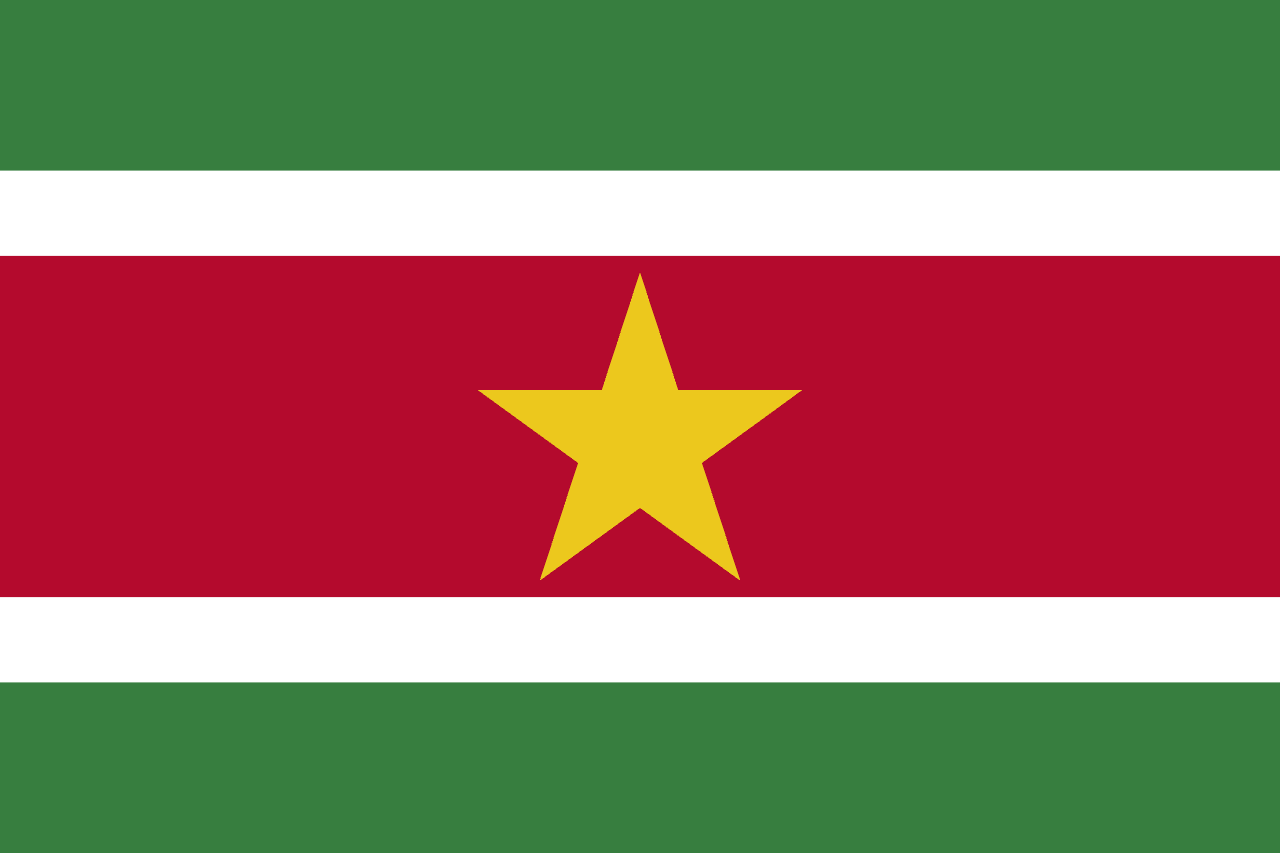
Symbolism
Green Stripes: Represent the forests and agricultural land that cover most of Suriname, symbolizing the country's rich natural resources and the fertility of the soil that sustains the population.
White Stripes: Represent peace and justice, symbolizing the desire for harmony among Suriname's diverse ethnic groups and the pursuit of fairness and equality for all citizens.
Red Stripe: Represents the unity and progress of the people, symbolizing the love that binds all Surinamese together regardless of their ethnic background and the determination to advance as a nation.
Yellow Star: Represents hope and the golden future that awaits Suriname, symbolizing the bright prospects for development and prosperity in the young independent nation.
Five Points of Star: Represent the five continents from which Suriname's diverse population originates, symbolizing the unity of peoples from Africa, Asia, Europe, and the Americas who now call Suriname home.
History
- Pre-Columbian Era: Indigenous peoples including the Arawak, Carib, and Wayana inhabited the region for thousands of years, developing complex societies adapted to the tropical rainforest environment.
- 1498-1667: Spanish, French, and English explorers and colonists established various settlements, with the English founding the first permanent European colony at Paramaribo in 1650.
- 1667-1975: Dutch rule was established through the Treaty of Breda, creating the colony of Suriname with plantation agriculture based on enslaved African labor and later indentured workers from Asia.
- 1863: Slavery was abolished in Suriname, leading to the importation of indentured laborers from India, Java (Indonesia), and China to work on plantations, creating the country's ethnic diversity.
- 1954: Suriname gained autonomy within the Kingdom of the Netherlands, beginning the transition toward full independence while maintaining economic and political ties with the Netherlands.
- November 25, 1975: Suriname gained independence from the Netherlands under Prime Minister Henck Arron, adopting the current flag and establishing a democratic parliamentary system.
- February 25, 1980: A military coup led by Sergeant Dési Bouterse overthrew the democratic government, beginning over a decade of military rule and political instability.
- December 8, 1982: The 'December Murders' saw the execution of 15 prominent opponents of military rule, leading to international isolation and suspension of Dutch development aid.
- 1987-1991: Civil war erupted between the military government and rebel groups, particularly in the interior, causing displacement and economic disruption.
- 1992: Democratic elections were restored with the New Front coalition winning power, beginning the transition back to civilian rule and constitutional government.
- 2010-2020: Dési Bouterse was elected president democratically, despite international war crimes charges, serving two terms before being defeated in 2020 elections.
- 2020-Present: President Chan Santokhi's government has worked to improve international relations, combat corruption, and address economic challenges including currency devaluation and inflation.
Trivia
- Suriname is the most forested country in the world, with over 93% of its territory covered by tropical rainforest, making it a global leader in forest conservation.
- The flag represents the most ethnically diverse country in South America, with significant populations of Indian, African, Javanese, Chinese, Indigenous, and mixed heritage.
- Dutch is the official language, making Suriname the only Dutch-speaking country in South America, though Sranan Tongo (Surinamese Creole) is widely spoken as a lingua franca.
- Suriname is the smallest country in South America by both population (about 600,000) and is one of the least densely populated countries in the world.
- The country has significant mineral wealth including gold, oil, and bauxite (aluminum ore), with mining being a major economic activity alongside agriculture and forestry.
- Traditional cuisine reflects the ethnic diversity, featuring dishes from Indian (roti, curry), Javanese (nasi goreng), Chinese, African, and Indigenous culinary traditions.
- The flag flies over a country where Hinduism (22%), Islam (14%), and Christianity (48%) coexist peacefully, along with traditional Indigenous and African spiritual practices.
- Suriname is home to the Central Suriname Nature Reserve, a UNESCO World Heritage site protecting pristine rainforest and serving as a biological research center.
- The country has a significant maroon population, descendants of escaped enslaved Africans who established autonomous communities in the interior and preserved African traditions.
- Agriculture includes rice cultivation (primarily by Javanese farmers), citrus fruits, and vegetables, though most food is imported due to limited agricultural development.
- Traditional music includes kaseko (Surinamese popular music), Indian classical music, Javanese gamelan, and various African-derived musical styles reflecting cultural diversity.
- Suriname faces significant challenges with emigration, as about half the ethnic Surinamese population lives abroad, particularly in the Netherlands.
- The capital Paramaribo features well-preserved Dutch colonial architecture and is a UNESCO World Heritage site showcasing the country's unique architectural heritage.
- The flag represents a country rich in biodiversity, with numerous endemic species in its pristine rainforests and rivers, making it important for conservation research.
- Despite natural resource wealth, Suriname struggles with economic development, infrastructure limitations, and political stability, while maintaining its remarkable cultural diversity.
Related Countries

Guyana
South America
A green field with a yellow arrowhead bordered in white pointing toward the fly, and a red triangle bordered in black at the hoist, known as 'The Golden Arrowhead,' representing the country's natural resources, diversity, and forward progress.
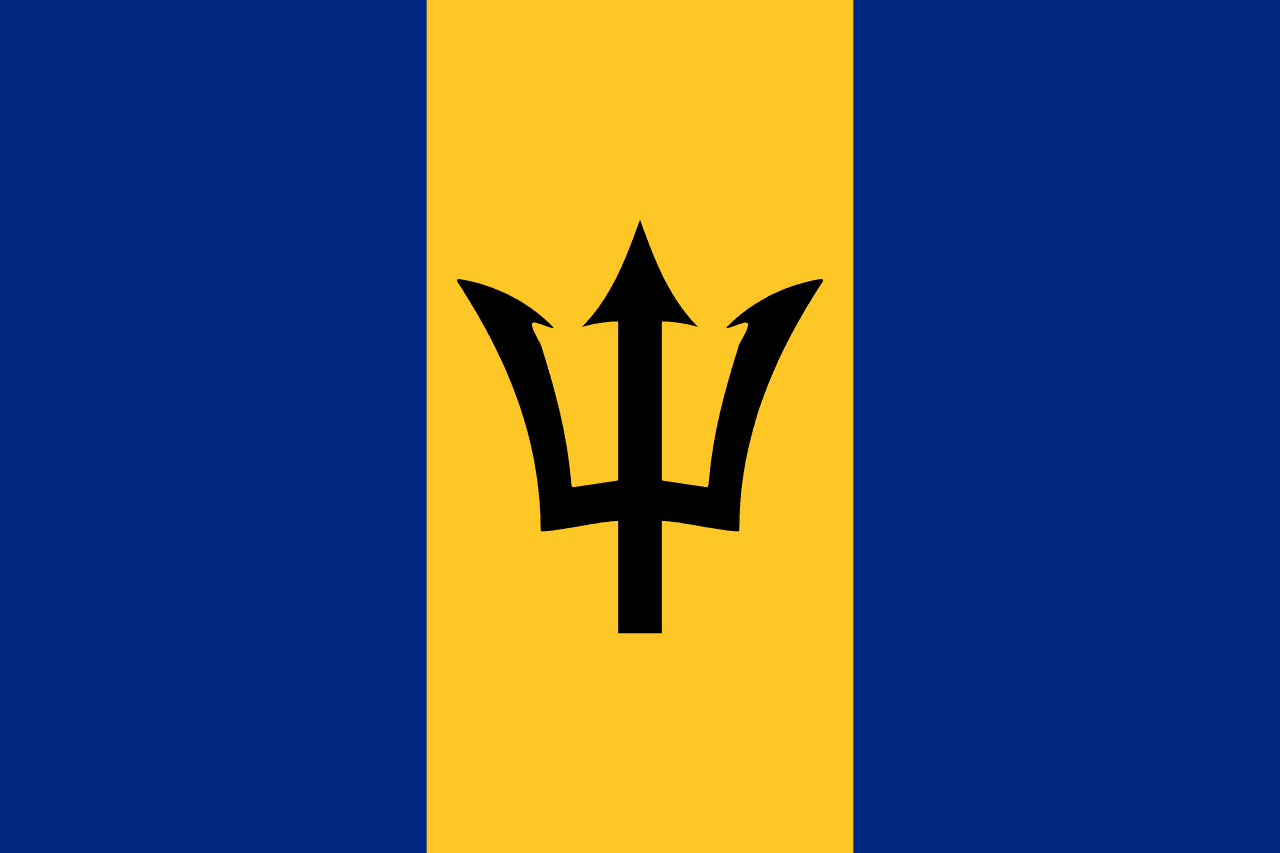
Barbados
North America
Three vertical stripes of ultramarine blue, gold, and ultramarine blue with a black trident head (broken from its staff) in the center golden stripe, representing the sea surrounding the island, the golden sands of its beaches, and the break from colonial dependence on Neptune's trident symbol.
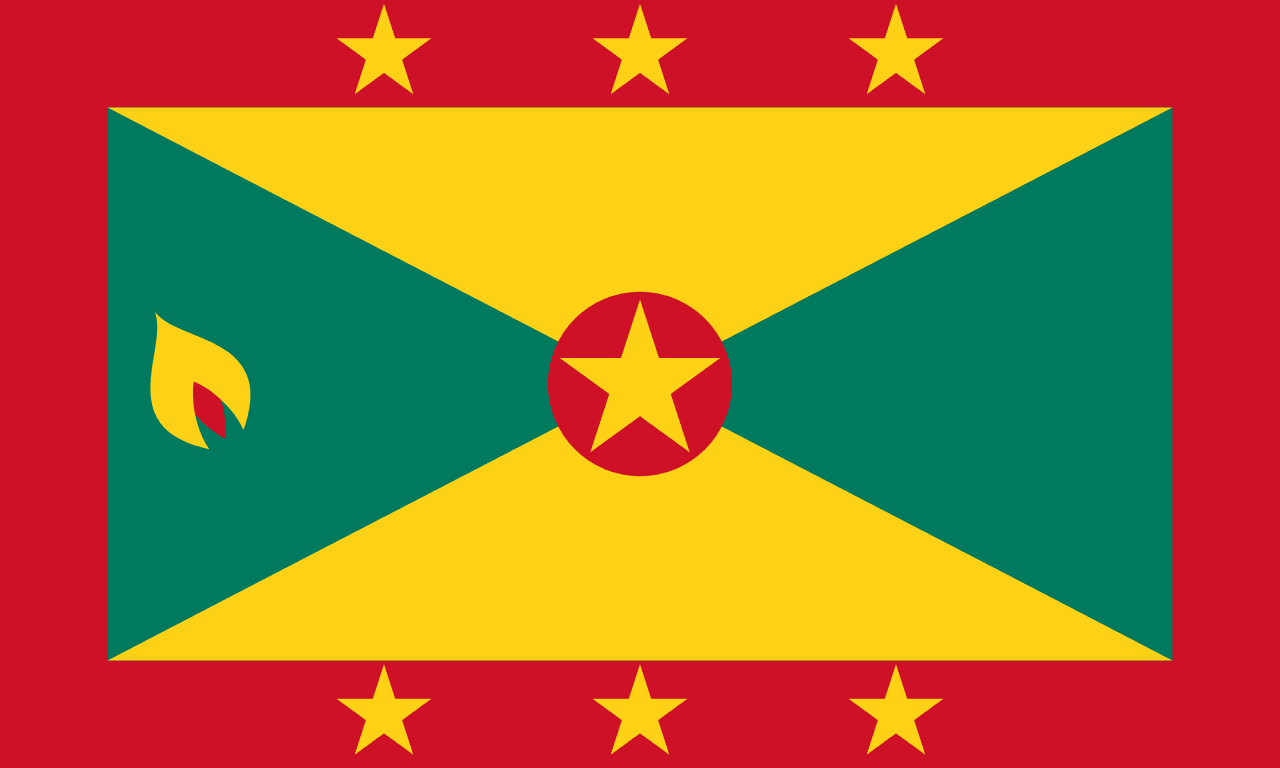
Grenada
North America
A red border surrounding yellow and green triangular sections with seven gold stars and a nutmeg symbol, representing the warmth of the people, sunshine and agriculture, vegetation and youth, and Grenada's fame as the 'Spice Island.'
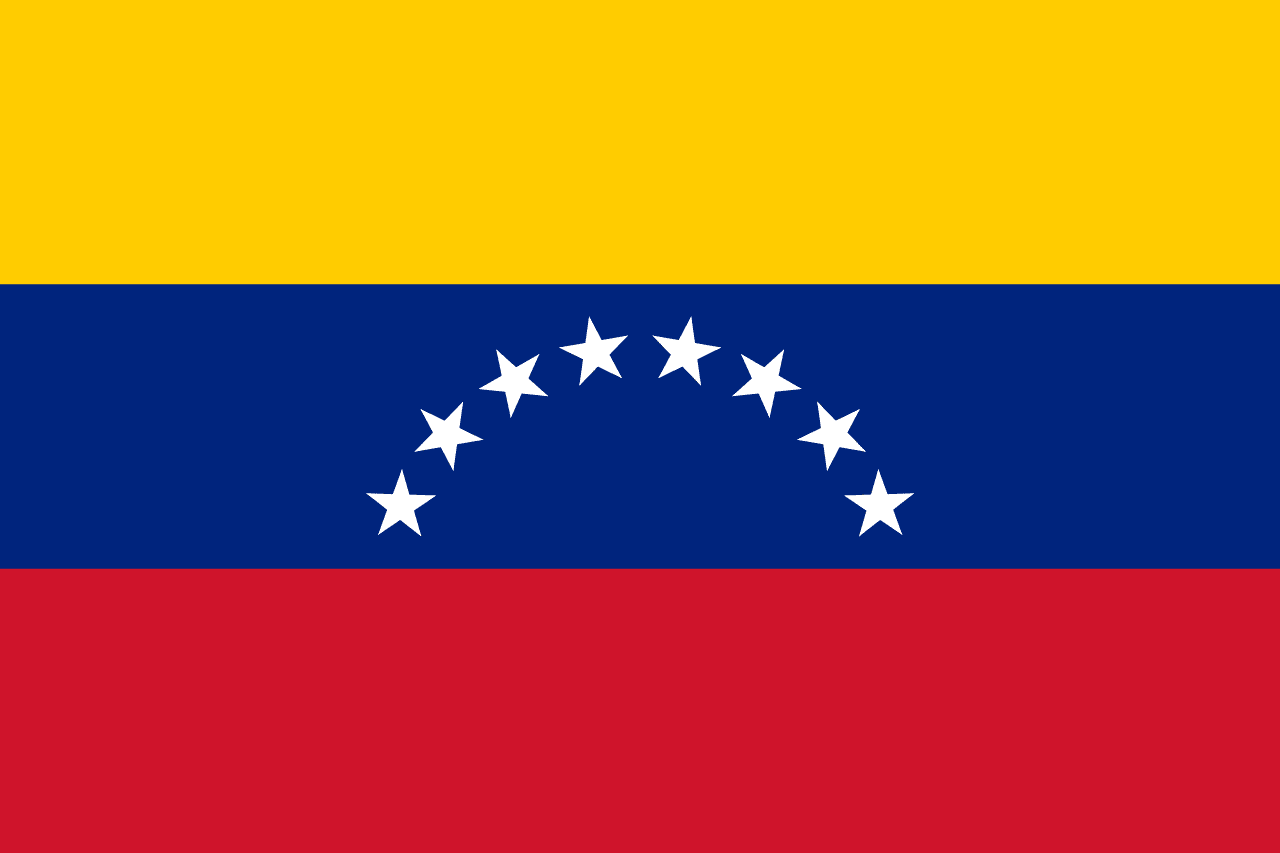
Venezuela
South America
Three horizontal stripes of yellow, blue, and red with eight white stars in an arc on the blue stripe and the coat of arms on the upper hoist corner, representing the wealth of the land, the seas separating Venezuela from Spain, the blood shed for independence, and the eight original provinces that declared independence.
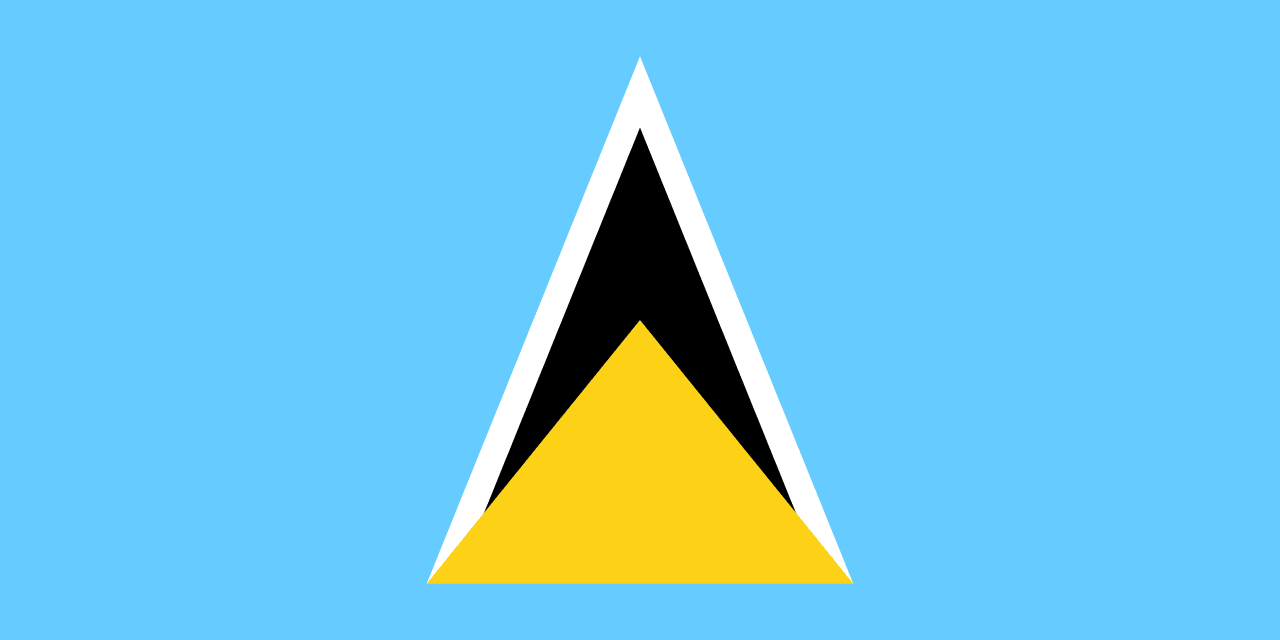
Saint Lucia
North America
A cerulean blue field with a gold isosceles triangle in front of a white-edged black triangle. The design reflects the island’s natural features and cultural heritage.
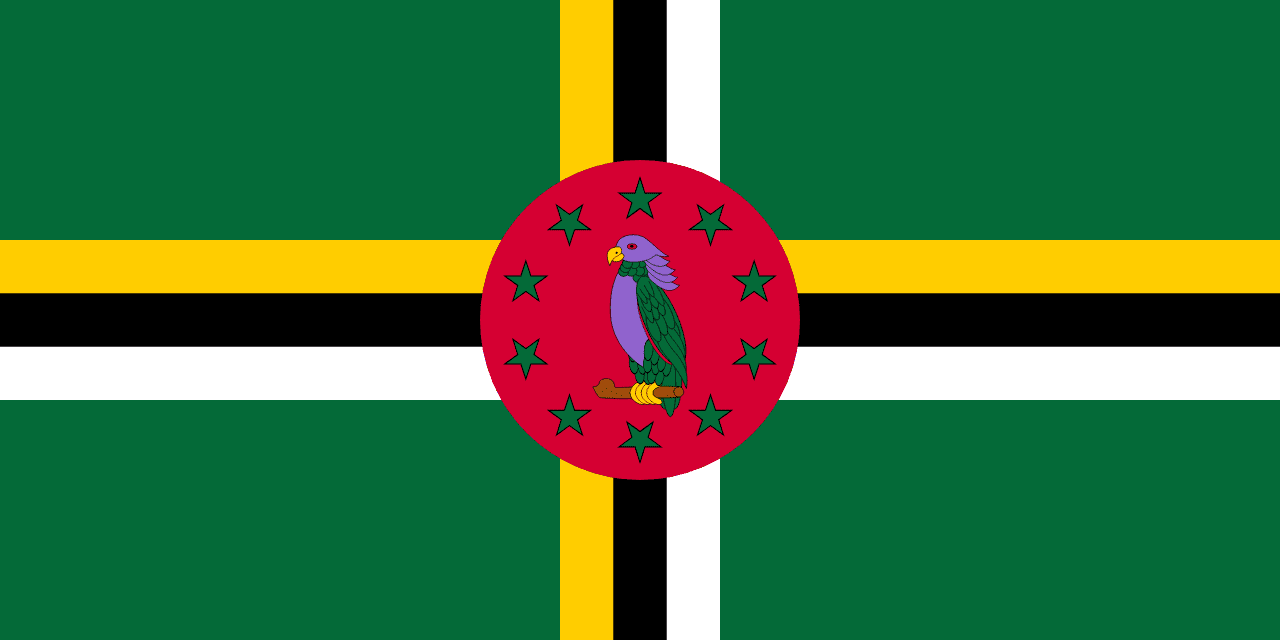
Dominica
North America
A green field with a cross pattern of yellow, black, and white stripes and a red circle in the center containing the Sisserou parrot, representing the lush vegetation, the Trinity, racial harmony, and the unique wildlife of the 'Nature Island of the Caribbean.'